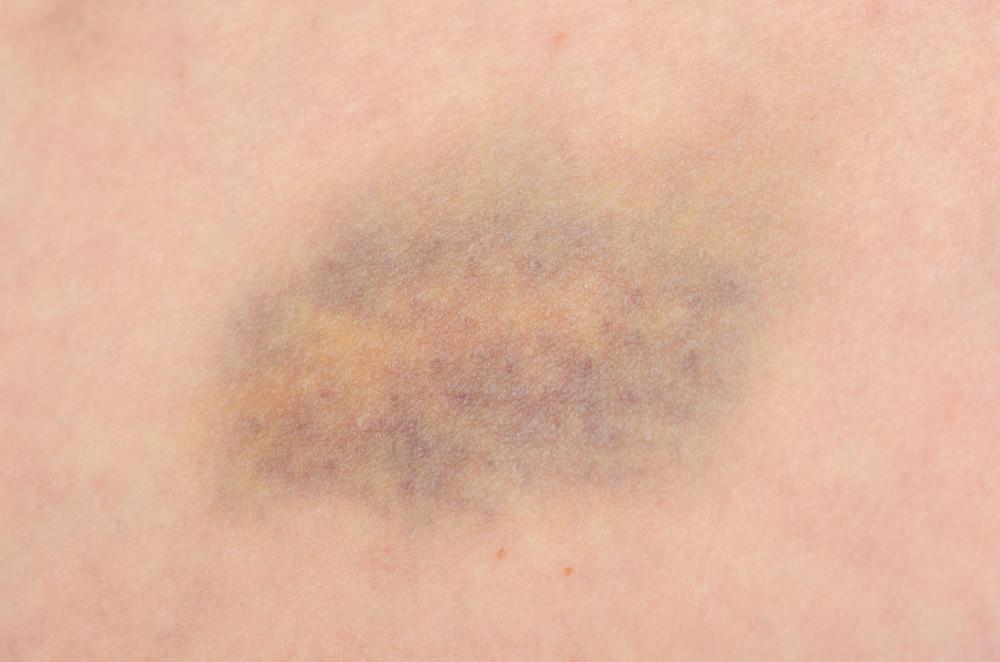At WiseGEEK, we're committed to delivering accurate, trustworthy information. Our expert-authored content is rigorously fact-checked and sourced from credible authorities. Discover how we uphold the highest standards in providing you with reliable knowledge.
What is Thrombotic Thrombocytopenic Purpura?
Thrombotic thrombocytopenic purpura is a disorder that causes clotting in the small blood vessels. These clots can be very damaging if they block blood flow to vital organs. People suffering with this disorder lack a sufficient quantity of a vital enzyme that helps inhibit an important blood clotting protein. The formation of so many blood clots can lead to overuse of blood platelets, which are responsible for clotting, and this can make people bleed or bruise spontaneously.
Most of the symptoms of thrombotic thrombocytopenic purpura stem from restriction of blood flow, but others can be a result of the blood platelet shortage. Some of the more severe symptoms involve the brain. Patients may feel confused, and sometimes they may speak differently or hallucinate. They may also have a rapid heart rate, fever and weakness, and they may faint. Beyond the aforementioned bleeding and bruising, the shortage of platelets can cause small purple spots that look a bit like a rash.

There are two different kinds of thrombotic thrombocytopenic purpura. The first kind is something people are generally born with, and it is called primary thrombotic thrombocytopenic purpura. Sometimes people acquire the disorder as a result of some other disease or trauma. When this happens, it is called secondary thrombotic thrombocytopenic purpura.

Scientists believe that the primary form of thrombotic thrombocytopenic purpura is probably genetically passed on. They aren’t sure about the exact mechanism involved in the development of the secondary form. Some of the conditions that can lead to secondary thrombotic thrombocytopenic purpura are pregnancy, bone marrow transplants, human immunodeficiency virus (HIV), and cancer. Some people also develop the disorder as a result of lupus, and there is some evidence of a connection to hormone replacement therapy.
Doctors often use blood replacement therapy as a treatment for thrombotic thrombocytopenic purpura. This works because the donors will have the right kinds of enzymes necessary to correct the imbalance in the sufferer's system. In many cases, this disease presents in an episodic way, so sufferers may need to repeat this treatment whenever they experience an episode.
Both forms of thrombotic thrombocytopenic purpura are very dangerous if left untreated, and in many cases, people don’t realize they have it until they’re too sick to be helped. When people are given proper treatment, the primary form has a long-term survival rate near 90%. The secondary form is considered much more dangerous, and patients often die even with appropriate treatment. Doctors are unsure about the reasons for this difference.
AS FEATURED ON:
AS FEATURED ON:












Discuss this Article
Post your comments